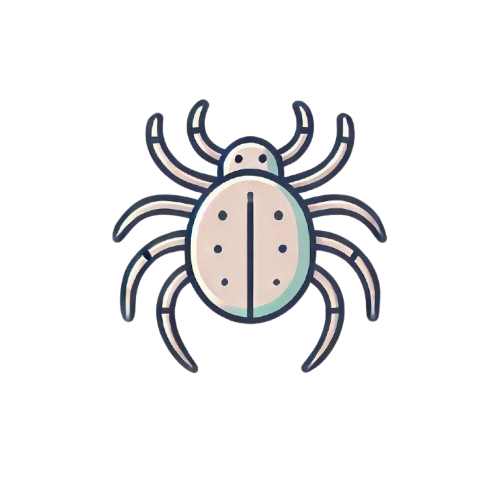Previously, we have written a comprehensive article about American Dog Ticks. You may read it here.
Now, we want to indulge your curiosity with 50 fun facts about them.
Enjoy the list!
General Information
- The American dog tick is also known as the wood tick.
- Its scientific name is Dermacentor variabilis.
- It is part of the Ixodidae family, known as hard ticks.
- The American dog tick is primarily found in North America.
- It is one of the most common tick species in the United States.
Physical Characteristics
- Adult ticks have a hard shield (scutum) on their back.
- Females are larger than males, especially when engorged.
- They have an oval shape and are reddish-brown.
- Males have mottled gray or white markings on their back.
- The mouthparts are adapted for piercing skin and sucking blood.
Life Cycle
- The tick undergoes four stages: egg, larva, nymph, and adult.
- Females lay thousands of eggs after engorging on a blood meal.
- The larval stage is also known as the seed tick.
- Larvae have six legs, while nymphs and adults have eight legs.
- Each life stage requires a blood meal from a host.
Habitat and Behavior
- American dog ticks thrive in grassy, wooded, and brushy areas.
- They can often be found along trails and edges of forests.
- Ticks use a behavior called “questing” to find hosts.
- Questing involves climbing onto vegetation and extending their front legs to latch onto hosts.
- They prefer warm and humid environments.
Feeding
- Ticks are obligate hematophages, meaning they feed solely on blood.
- They feed on a variety of hosts, including mammals and birds.
- The feeding process can last several days.
- Ticks secrete a cement-like substance to stay attached while feeding.
- They can detect hosts through body heat and carbon dioxide.
Disease Transmission
- American dog ticks are vectors for Rocky Mountain spotted fever.
- They can transmit tularemia to humans and animals.
- They are also known to cause tick paralysis through a neurotoxin in their saliva.
- Tick-borne diseases can have severe health impacts if not treated.
- Early removal of ticks reduces the risk of disease transmission.
Prevention and Control
- Avoiding tick-infested areas reduces the risk of tick bites.
- Wearing protective clothing, such as long sleeves and pants, helps prevent ticks from attaching.
- Using tick repellents containing DEET or permethrin is effective.
- Regularly checking for ticks after spending time outdoors is crucial.
- Prompt removal of ticks using fine-tipped tweezers minimizes the risk of disease.
Ecology and Role in the Environment
- Ticks play a role in regulating wildlife populations by parasitizing hosts.
- They serve as a food source for various predators, including birds and small mammals.
- Tick populations can impact the health of wildlife species.
- The presence of ticks influences the behavior and distribution of their hosts.
- Ticks contribute to the spread of tick-borne diseases among wildlife.
Research and Future Directions
- Ongoing research aims to understand tick biology and behavior better.
- Studies focus on developing vaccines against tick-borne diseases.
- Genetic research explores ways to control tick populations.
- Advances in tick control methods, such as acaricides, are being studied.
- Public health initiatives aim to increase awareness and prevention of tick-borne diseases.
Interesting Facts
- Ticks can survive for long periods without feeding.
- They can sense hosts from a distance using specialized sensory organs.
- The American dog tick’s range has been expanding due to climate change.
- Some species of ticks can reproduce without a mate (parthenogenesis).
- Ticks have been around for millions of years, dating back to the Cretaceous period.


Leave a Reply